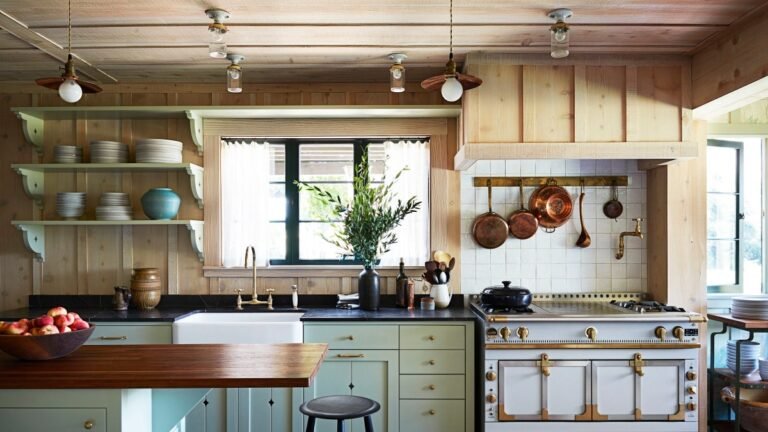MZ Wallace’s New Flagship Is a Fantasia of Trompe L’oeil Stone
If you’ve taken the New York City subway at rush hour—or anytime, really—you’ve probably seen a stylish someone sporting an MZ Wallace tote. The lightweight carryalls, made of hard-wearing quilted nylon, have achieved cult status for being cool, commute-friendly, and accessible. “Luxury and practicality can coexist,” insists Lucy Wallace Eustice, who founded the brand with Monica Zwirner aiming to prove just that—and in It-bag-obsessed SoHo, no less. Their first shop opened on Crosby Street in 2000, and they’ve since relocated to multiple addresses. Now they’re back on the street where it all began, centralizing their Big Apple presence with a new flagship and retail identity master-minded by AD100 firm Charlap Hyman & Herrero.
The goal for the store, a 1,900-square-foot space in a historic building, was to hit that same high-low sweet spot. “Something can be elegant without sacrificing efficiency or versatility,” explains Adam Charlap Hyman, who has translated that ethos into an ever-so-surrealistic space. Inspired by Gio Ponti’s marble-pattern rubber floors for the Pirelli Tower in Milan, he devised his own wink at the ubiquitous luxury stone. By digitally manipulating photos of marble, he created the oversized trompe l’oeil print that now wraps the MZ Wallace store as wallpaper, fabric, and industrial carpet (printed by Wallpaper Projects, Dyenamix, and Patterson Flynn, respectively).“It becomes a kind of camouflage,” Zwirner says of the motif, which will also line the brand’s forthcoming Chicago flagship, as well as future department-store displays. No surprise, they’re already talking about using it on products.
In SoHo, where bags are displayed on lustrous pedestals by L.A. artist Shun Kinoshita, Charlap Hyman did leave one wall blank, installing picture railings to host rotating works of art from Platform, an online marketplace curated in partnership with David Zwirner gallery. Currently on display are photographs by Wolfgang Tillmans, the subject of a concurrent exhibition at New York City’s Museum of Modern Art. His portraits and that ersatz stone veining are reflected in abundant mirrored surfaces, among them shelves, plinths, and what Charlap Hyman calls “a folded, faceted jewel cave” at the back of the store. Let the selfies commence. At 49 Crosby Street; mzwallace.com


